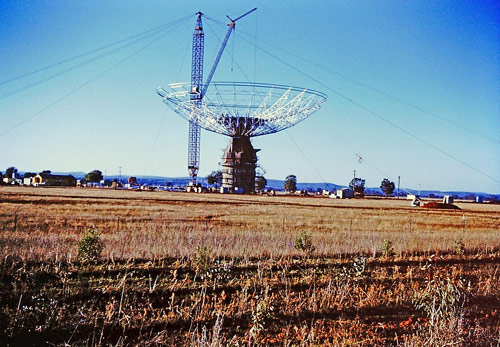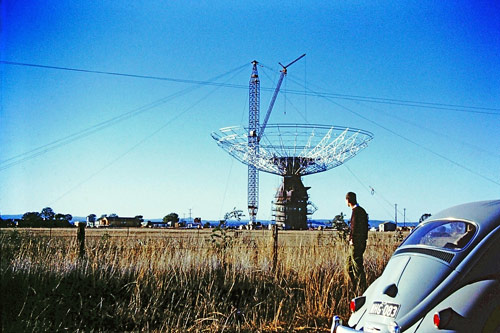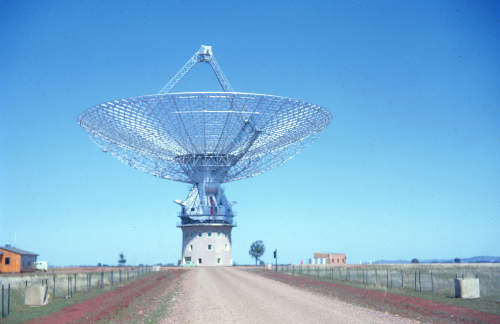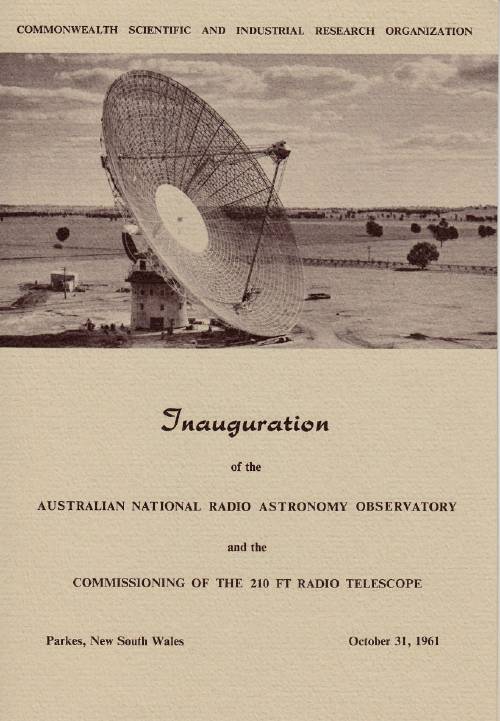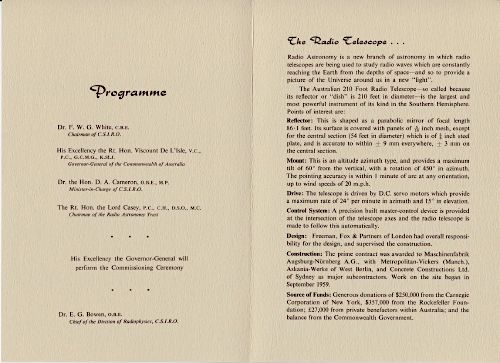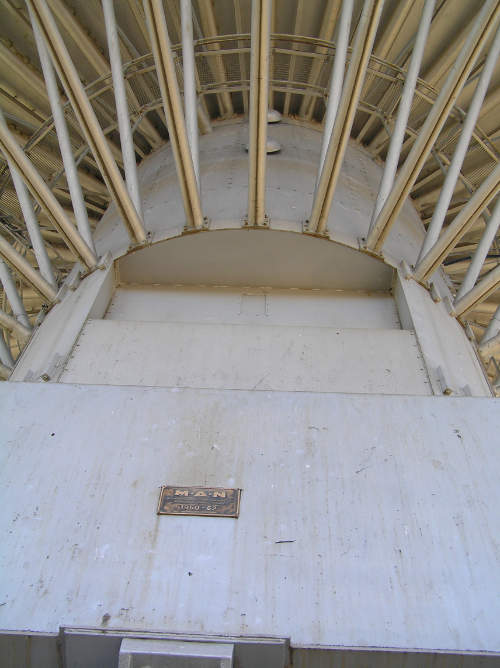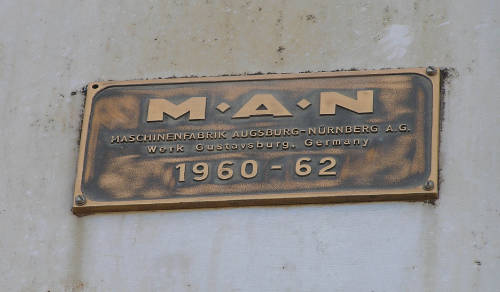The inside pages of the card. The text on the right reads:
Radio Astronomy is a new branch of astronomy in which radio telescopes are being used to study radio waves which are constantly reaching the Earth from the depths of space and so to provide a picture of the Universe around us in a new “light”.
The Australian 210 Foot Radio Telescope – so called because
its reflector or “dish” is 210 feet in diameter – is the largest and most powerful instrument of its kind in the Southern Hemisphere.
Points of interest are:
Reflector: This is shaped as a parabolic mirror of focal length 86.1 feet. Its surface is covered with panels of 5/16 inch mesh, except for the central section (54 feet in diameter) which is of 3/8 inch steel plate, and is accurate to within ±9 mm everywhere, ±3 mm on
the central section.
Mount: This is an altitude azimuth type, and provides a maximum tilt of 60° from the vertical, with a rotation of 450° in azimuth. The pointing accuracy is within 1 minute of arc at any orientation, up to wind speeds of 20 m.p.h.
Drive: The telescope is driven by D.C. servo motors which provide a maximum rate of 24° per minute in azimuth and 15° in elevation.
Control System: A precision built master-control device is provided at the intersection of the telescope axes and the radio telescope is made to follow this automatically.
Design: Freeman, Fox & Partners of London had overall responsibility for the design, and supervised the construction.
Construction: The prime contract was awarded to Maschinenfabrik Augsburg-Nürnberg A.G., with Metropolitan-Vickers (Manch.), Askania-Werke of West Berlin, and Concrete Constructions Ltd. of Sydney as major subcontractors. Work on the site began in September 1959.
Source of Funds: Generous donations of $250,000 from the Carnegie Corporation of New York, $357,000 from the Rockefeller Foundation; £27,000 from private benefactors within Australia; and the balance from the Commonwealth Government.
Large, Larger. |
